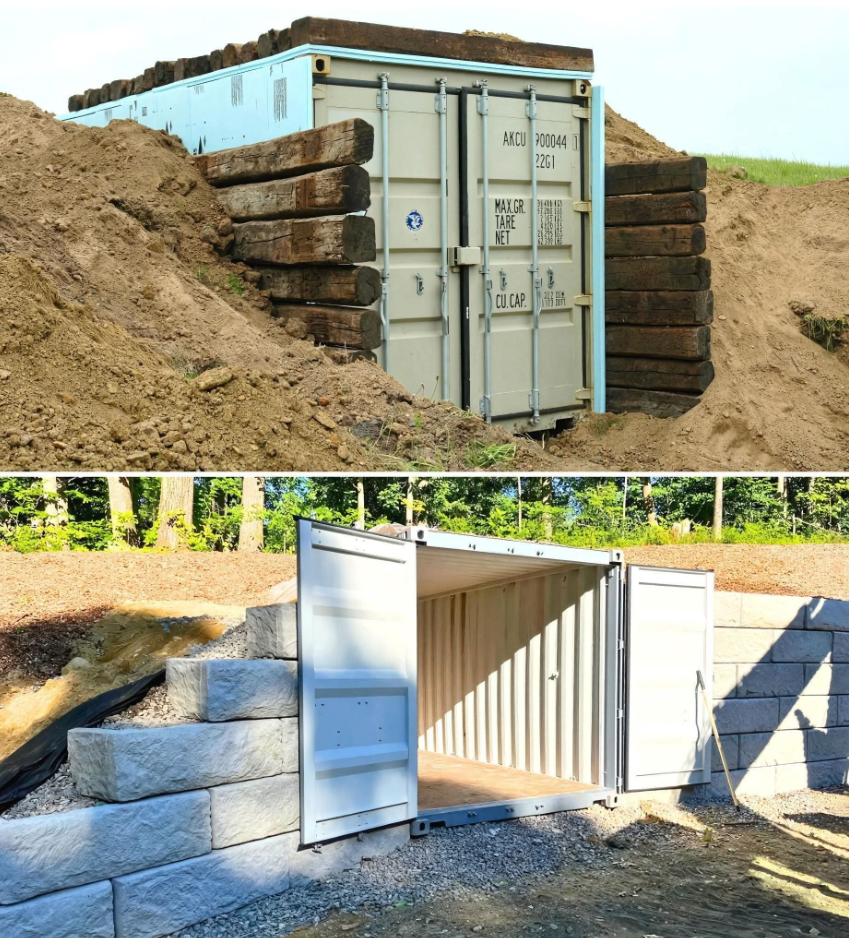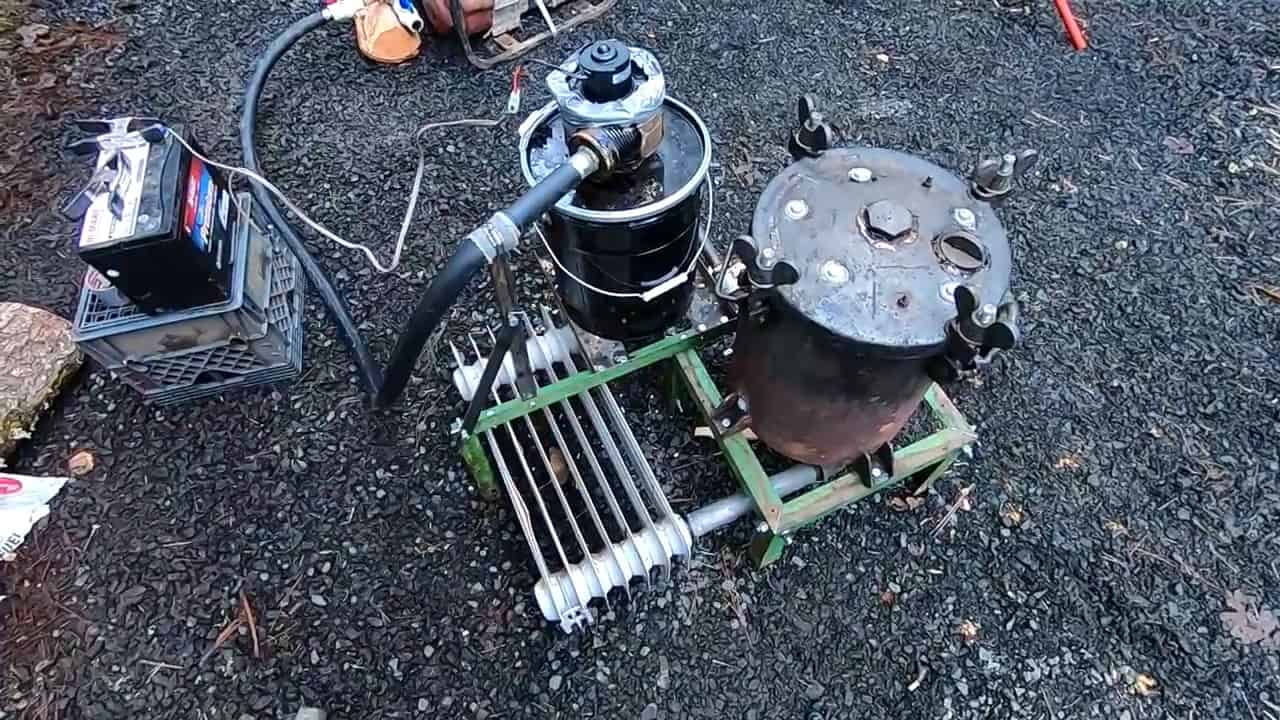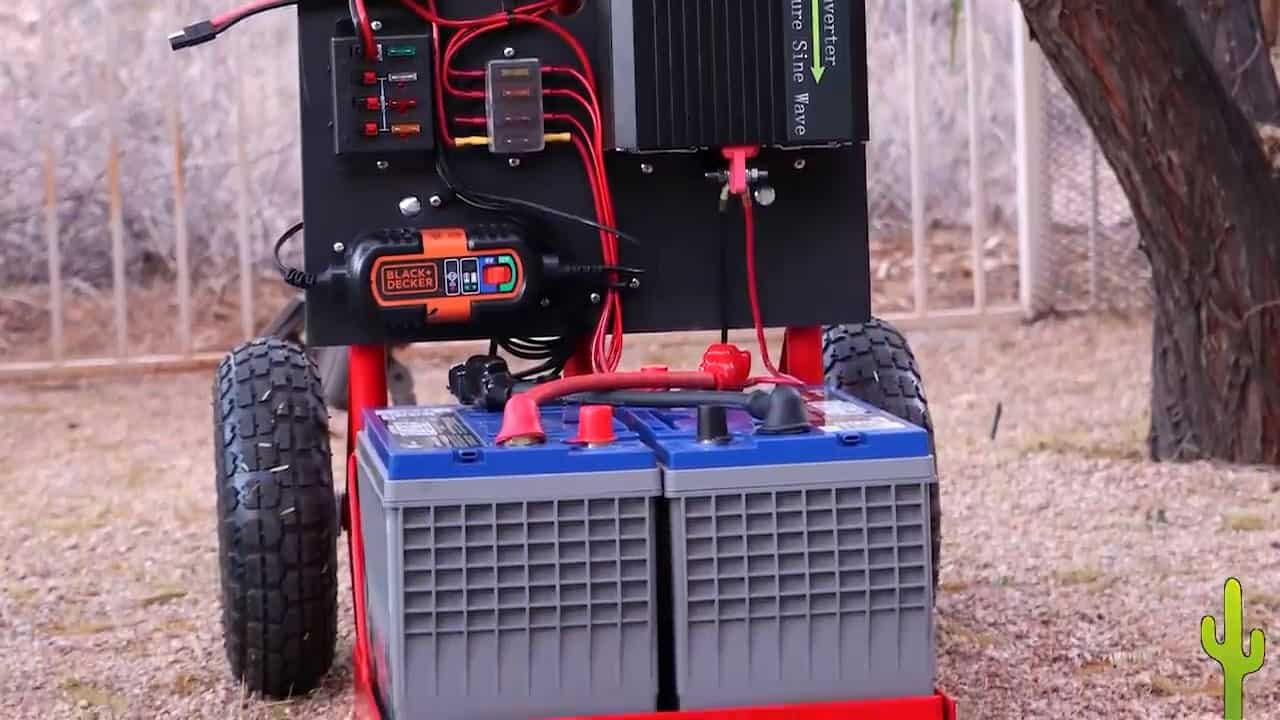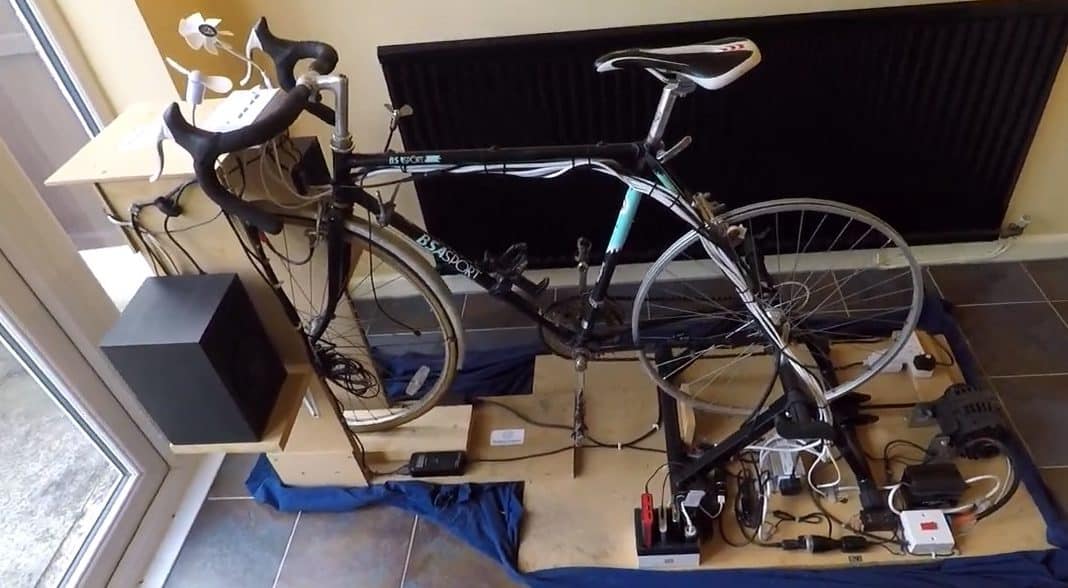This image shows a fascinating approach to building a semi-underground structure, likely a root cellar, bunker, or storage shed, using a shipping container.
One of the most significant challenges in building an underground structure is preventing the surrounding earth from collapsing the walls and roof. The builders here have used some creative, and possibly risky, techniques to address this.
The Problem: Earth Pressure
The primary enemy of any underground structure is soil pressure. The weight of the earth pushing against the walls and roof is immense. A standard shipping container is designed to be stacked high with cargo, so its vertical strength is excellent, but its side walls and roof are much weaker and not meant to withstand the lateral and downward pressure of tons of soil.
The Solution: External Reinforcement
In the top image, we can see what looks like large, heavy railroad ties stacked vertically against the sides of the container. These ties are likely meant to act as a buttress, distributing the pressure from the surrounding soil and preventing the container’s walls from bowing inward or collapsing. The roof is also covered with what appears to be a rigid insulation board, followed by more ties, suggesting they are trying to reinforce the top against the weight of the earth.
In the bottom image, the builders have used a different method: a thick retaining wall made of large concrete blocks. This is a much more robust and traditional way to handle soil pressure. It also creates a more finished and functional entryway to the container.
Will It Work?
The million-dollar question is whether this will work. The answer depends heavily on the specific construction and the type of soil.
- Railroad Ties: The ties in the top image may offer some support, but it’s unclear if they are enough. If the soil becomes saturated with water, the pressure will increase dramatically, and the ties could shift or buckle. The uneven nature of the ties and the space between them may also create weak points.
- Concrete Blocks: The concrete block wall in the bottom image is a far more reliable solution. A properly engineered retaining wall is designed specifically to handle the kind of pressure an underground structure faces. This method is much more likely to be a permanent and safe solution.
Overall, while the use of a shipping container is a resourceful idea, the methods used to reinforce it are critical. The concrete block retaining wall is a smart and safe choice, while the railroad tie approach is much more questionable and could fail under pressure. Building an underground structure is no small feat, and it’s essential to consult with an engineer to ensure it is done safely and correctly.




